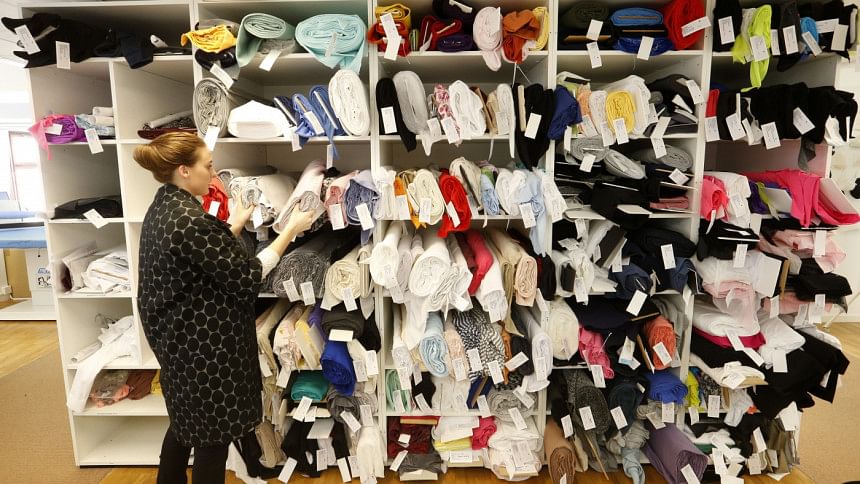Clothing as a commodity: The naked truth

The global apparel industry has a serious overproduction issue and it impacts all sections of the supply chain. We hear so much about the issue of recycling, circular economy and all manner of new and exciting industry initiatives designed to take the fashion industry forward and make it more sustainable.
But hold on just one moment. Are we not in danger of running before we can walk, with the focus on industry initiatives which have sunset dates that are 10 or 15 years from now, when we currently have a major problem that is staring us all right in the face: product waste?
Excess inventory or product waste is the dirty secret that has an impact right across the apparel supply chain, from one end to the other. Recent research, for instance, found that at least 10 percent of garments—which equate to 230 million pieces—remain unsold in Germany each year, while in North-West Europe, 4,700 kilo tonnes of post-consumer textile waste are generated annually.
These figures were included in two separate reports which looked at the staggering scale of waste and excess inventory in the global apparel industry. One of the reports points out that less than one percent of textiles collected are currently recycled into new ones, while around half are downcycled, incinerated or landfilled.
Yet in reality, this is not a smart recycling issue. We know recycling technologies have come on at a fantastic rate and will surely play a huge part in the industry in future. But that's a discussion for another time, for this is an over-production issue. It is an inventory management issue. It is a logistical issue. And it is one that the industry should—and can—be addressing now.
The good news is that there are many possible solutions to this problem which we could begin implementing right now. I will come back to these solutions later.
In economics, we have the widely accepted concept of scarcity. We live in a world of scare resources and it is this scarcity that dictates the dynamics of demand and supply. Excess demand over supply sees prices rise; and excess of supply over demand sees prices fall. This way prices are dictated.
But the apparel industry at times appears to operate in a parallel universe where the laws of demand and supply have been turned on their head; or, rather, they are never given the chance to take effect. In short, the market is broken.
Allow me to explain. Because apparel has been outsourced to the cheapest possible destinations where wages are lowest—like Bangladesh—and because suppliers have been pressured to work in increasingly fine margins, this means apparel retailers can now get clothing onto shelves for next to nothing. This, in turn, means clothing has become—certainly in large parts of the market—commoditised. It is produced in such huge quantities that the market is always completely saturated and there is a huge excess of supply over demand at any given time, and this in turn ensures that prices remain at rock bottom.
Only if the market were to collectively squeeze supply would prices increase, but this won't happen because no retailer wants to be the first to blink on this issue. Instead, they keep producing more and more and if this means an excess of inventory (which it does, and has done for decades), nobody is too concerned because, as outlined earlier, production costs have been squeezed so low anyway. A few more thousand units which don't sell simply aren't seen as a big deal in this industry.
For sure, we have seen improvements in logistics and inventory management in some parts of the apparel industry but, at heart, this remains an industry which is frighteningly relaxed about the issue of excess product.
But this is about more than just retailers. In supply chains, excess produce—waste—is also a huge problem. Waste is generated in the supply chain in several ways as textile fibres go through the spinning, manufacturing, wet processing and production stages. Ten percent, or more in some cases, of output can be lost as waste during each of these stages.
In Bangladesh, the more positive news is that we do manage to make use of this waste. Some excess fabrics are reused in the local market. For instance, a large portion can be cut down for smaller garment sizes. Some are reused for quilts, cushions and other related products. Some are mechanically recycled and rebranded. And some are used in value-added products other than textiles, such as composites and insulation.
But we can and should be doing more about the issue of waste in production because more waste in the production process ultimately means lower margins. In this sense, in Bangladeshi factories, waste is an economic issue as much as an environmental one; nonetheless, it is one the industry as a whole needs to address through better factory management, better training and more sophisticated production techniques.
Where waste becomes a real environmental challenge is, as indicated, where we move further along the supply chain. It seems insane that in a world of scarce resources, factories are producing far more of a product than the market is actually demanding.
I mentioned solutions earlier, and these are fairly clear-cut. Firstly, we need agreed minimum unit prices paid to RMG factories by brands and retailers. One of the reasons brands are so relaxed about excess inventory is because unit prices are so low. Higher prices would soon sharpen their focus and encourage them to treat the issue of stock management a little more seriously.
Secondly, we need the extension of Extended Producer Responsibility (EPR) laws to the global apparel industry. EPR is a policy approach under which producers are given a significant responsibility—financial and/or physical—for the treatment or disposal of post-consumer products. Such laws are common in many industry sectors but, sadly, not in apparel. That needs to change.
Finally, we need a broader, cultural shift to encourage people to place greater value on clothing and stop viewing it merely as a commodity. Education can help here but ultimately this will not change as long as retailers continue to saturate the market with mountains of clothing, a large majority of which they know in advance will end on the sale rail or not get sold at all.
Mostafiz Uddin is the Managing Director of Denim Expert Limited. He is also the Founder and CEO of Bangladesh Denim Expo and Bangladesh Apparel Exchange (BAE). Email: [email protected]

 For all latest news, follow The Daily Star's Google News channel.
For all latest news, follow The Daily Star's Google News channel. 



Comments